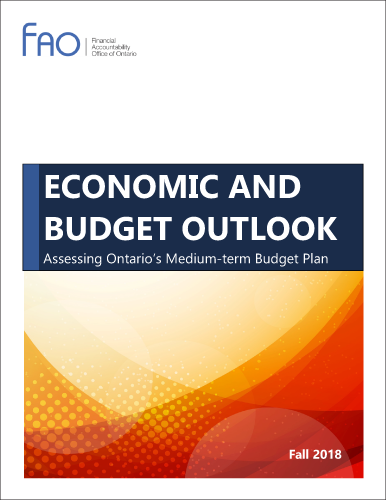Economic and Budget Outlook, Fall 2018

The Fall 2018 Economic and Budget Outlook provides the FAO’s latest economic forecast and an updated assessment of the Province’s fiscal outlook.
Economic and Budget Outlook, Fall 2018, Financial Accountability Office of Ontario, 2018.

